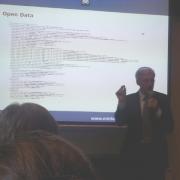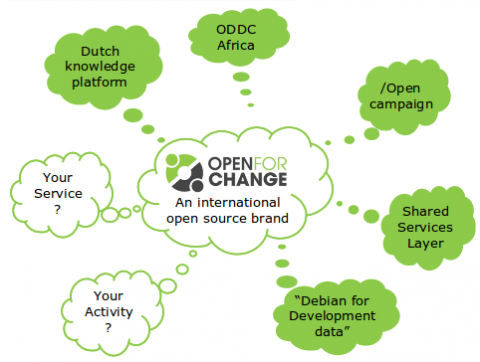It’s the linking, stupid!

The current discussion around open data often boils down to releasing data sets, and seeing nice visualisations and apps. But lets not forget that the full phrase is linked open data. The real power comes from linking the data. This week, the Open Government Data Camp in Warsaw lets us explore this more.
Just as web pages today link to other pages for further information, the data sets of tomorrow will link to other data sets, for more data. Your browser will help you navigate the data space.
The BBC is ahead in this game, and working on a “Digitial Public Space” project, linking together many sources of cultural data. Jake Berger writes on the BBC blog:
Early versions of this data model indicate that – as hoped – there will be many, varied and often unexpected journeys that can be made through these catalogues and the material they describe. For example, a user starting out by watching a film of a production of Macbeth from the Royal Opera House might then look at a scan of a rare musical manuscript from The National Archives, then browse similar manuscript scans held at the British Library, watch a clip from a BBC documentary about how paper was produced in Shakespeare’s era, before ending up learning about the plants used to make the paper using information from The Royal Botanic Gardens At Kew. In a [Digital Public Space], all of this could happen in the same online space.
That may still sound a bit like the current web of pages. Except: the publishers only provide standardised links for “Shakespeare”, “paper”, etcetera, and your browser makes the connections to offer you ways to move forward:
Mo blogged about the development of a web browser-based user interface, which navigates through these catalogues using the concepts of “people”, “places”, “events”, “things” and “collections”.
In international development aid, the IATI standard is an effort to work towards a similar “digital public space” in which you can navigate through “organisations”, “activities” and “results”.
An important part of establishing that space is to work towards joint standardised identifiers. At our ODDC conference in May, David Pidsley’s Virtual Workshop on Linking Development Data was focused on that, and next weekend, Tim Davies is organising an Organisation Identifiers Workshop as a fringe event for the Open Government Data Camp, in Warsaw, to continue working on this. And we’ll have more general Open Data for Development: Open Space session on Saturday morning.


 Today,
Today, 

 Another “hack post”, to capture how I got mobile broadband working on my Sony laptop. Sony makes laptops with cutting-edge features (small, solid-state disk, full HD screen) and a stylish look, but doesn’t like to help you take full advantage of it unless you’re on Windows. Undocumented tweaks to the hardware, hard-to-find technical information, and so on.
Another “hack post”, to capture how I got mobile broadband working on my Sony laptop. Sony makes laptops with cutting-edge features (small, solid-state disk, full HD screen) and a stylish look, but doesn’t like to help you take full advantage of it unless you’re on Windows. Undocumented tweaks to the hardware, hard-to-find technical information, and so on. After copying the appropriate three files with the right name into /lib/firmware/gobi, I flipped the “wireless” switch off, waited some 10 seconds, and switched on again. And was greeted with a pop-up to enter the PIN code for my SIM card: indicating that the modem had been detected, the firmware had been loaded, and my SIM card was working.
After copying the appropriate three files with the right name into /lib/firmware/gobi, I flipped the “wireless” switch off, waited some 10 seconds, and switched on again. And was greeted with a pop-up to enter the PIN code for my SIM card: indicating that the modem had been detected, the firmware had been loaded, and my SIM card was working.